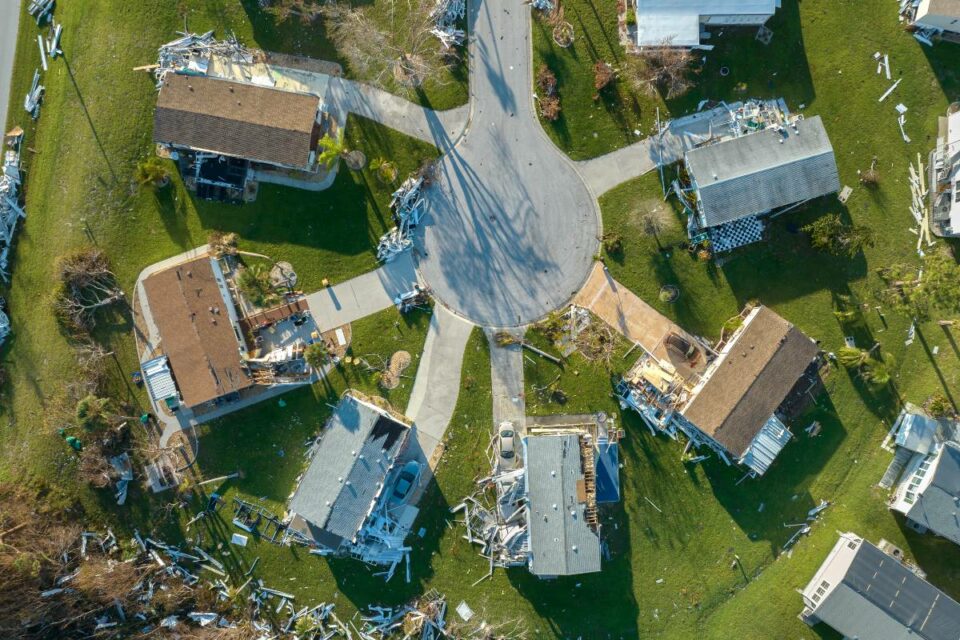In 2021, the market size for cold storage in the United States was evaluated at USD 30.26 billion and is projected to reach USD 33.08 billion this 2022. Cold storage warehouses are an essential part of the food supply chain, as they allow perishable products to be stored for long periods without spoiling. In this blog post, we’ll provide you with a complete guide to cold storage warehousing so that you can make an informed decision about which system is right for your business.
In 2021, the market size for cold storage in the United States was evaluated at USD 30.26 billion and is projected to reach USD 33.08 billion this 2022. The demand for cold storage warehouses is expected to increase due to the rising demand for fresh food products from consumers.
![Cold Storage Warehousing [Your Complete Guide] Cold Storage Warehousing](https://toljcommercial.com/wp-content/uploads/Cold-Storage-Warehousing-2.jpg)
The Basics of Cold Storage and Refrigerated Warehousing
There are several options for storing your food, including: refrigeration, freezing and cold storage. While these may seem like similar methods for preserving food, each one is unique in its own way.
Cold Storage Facility Customization
Refrigerated warehouse space is used to store temperature-sensitive products. These warehouses provide a controlled environment for the safe keeping of goods, including perishable items such as food items.
In addition to providing a high level of security for your products, cold storage facilities also help reduce the risk of spoilage and damage due to weather conditions or temperature fluctuations. This can be important for companies that need to store sensitive materials over an extended period.
Refrigerated goods have different requirements
Cold storage warehousing is ideal for storing perishable goods that require refrigeration, such as fruits and vegetables. Cold storage warehouses are typically large warehouses with climate control systems to keep the temperature within a specific range. The temperature within the cold storage warehouse is kept between 0 and 5 degrees Celsius (32 to 41 degrees Fahrenheit), which allows the stored products to last longer than they would in normal conditions.
Refrigerated goods have different requirements than non-refrigerated goods at a warehouse. They need to be kept at a certain temperature so that they don’t spoil or rot before they’re sold. A warehouse that doesn’t have an adequate cold storage area may not be able to store refrigerated goods properly, which will increase your costs and decrease your profits because you’ll have to throw out spoiled produce before it gets to market.
Energy efficiency requirements
The warehouse must be able to provide a high degree of energy efficiency. Energy efficiency is a vital factor in determining the cost of refrigerated storage facilities. The energy used to power the warehouse can greatly affect your business’s profitability.
The most common way that cold storage warehouses keep their produce fresh is through the use of refrigeration units. These units use large amounts of electricity, and this cost must be factored into the overall cost of storing your inventory there.
There are several ways you can help reduce the amount of electricity required to run your cold storage warehouse:
- Use LED lights instead of incandescent ones. LED lights use less energy and last longer than incandescent bulbs do — meaning fewer replacements and fewer maintenance costs for you over time.
- Buy more efficient equipment (such as refrigerators) that doesn’t require as much electricity to operate. You may also be able to get rebates from local utility companies if you make these purchases through them.
- Choose an environmentally friendly facility that uses its renewable energy sources (e.g., solar panels). This will help reduce your carbon footprint and save you money on utility bills over time.
Types of cold storage
Here are several types of cold storage:
Refrigerated Containers
These are large commercial buildings that offer a variety of services, including refrigeration and climate control. Cold storage warehouses are often located near produce markets or food processing plants, making them convenient for customers who need access to their goods quickly.
Blast Freezers and Chillers
A blast freezer is a type of cold storage warehouse that uses heavy-duty fans to circulate air at very low temperatures. The air from outside is brought into the building through vents and then blown out through exhaust vents at an even lower temperature than when it entered. The air is circulated throughout the building using these fans and this helps keep all areas cool at all times.
Cold Rooms
Cold rooms are one of the types of cold storage warehouses that can be found in most commercial buildings or facilities today. Cold rooms can be found in many different places like hospitals, supermarkets, and schools as well as industrial areas where certain items need to be kept at a specific temperature at all times to prevent spoilage or contamination by bacteria and other microorganisms. In most cases, the food that is stored in these areas must be kept at a temperature between 40°F (4°C) or colder.
Pharmaceutical Grade Cold Storage
Pharmaceutical-grade cold storage are designed specifically for pharmaceuticals and other sensitive materials. They provide safe storage conditions while reducing their risk of exposure to extreme temperatures and other elements that could degrade their quality. These kinds of Pharmaceutical-grade cold storage warehouses offer high security and controlled environments that meet all FDA standards for storing pharmaceuticals safely without introducing any contaminants into them.
Plant-attached Cold Storage
These are located on the premises of the company that owns them and are usually not rented out to others. They are used by companies who need to store their products in cold conditions for a longer period than they could afford with other types of cold storage warehouses.
Dedicated Custom Cold Storage Facilities
Dedicated custom cold storage facilities are designed to store perishable goods that require specific conditions for storage. These facilities provide temperature control and monitoring as well as customized computer systems for inventory management.
The facility may be open or enclosed, depending on the needs of the customer and the type of product being stored. These Dedicated custom cold storage facilities can help businesses reduce labor costs through automation since there is no need for manual transport from one location to another within the warehouse facility. These facilities typically charge higher monthly rental fees than standard refrigerated-domestic or frozen-food cold storage warehouses because they offer more specialized services that meet individual company needs.
Items to be kept in a cold storage warehouse
Here are some unexpected products that require a temperature-controlled warehouse:
Candles
Candles are an important item to be stored in these warehouses as they are sensitive to temperature fluctuations. Candles contain wax that melts at high temperatures and hardens at low temperatures. The scent of candles also changes with temperature, so they must be stored in a cool and dry environment.
Film
Storing film in a cold environment helps to preserve the quality of the film and prevent it from being damaged. Cold storage warehousing is typically done in a controlled environment, such as a refrigerator or freezer.
Artwork
Artwork is another item that can be kept in a cold storage warehouse. When you have art, you want to have a place where it can be stored safely and preserved for as long as possible. Art needs to be kept in an environment where it will not be exposed to moisture, heat, or sunlight. If you have paintings or other artwork that you want to store, then this is something that should be considered.
Plants
If you’re looking for a cold storage warehouse, then plant nurseries are one option worth considering. These warehouses have plenty of space and controlled environments where plants can grow without facing any problems such as excessive sunlight or high temperatures in summer or too much rainfall during winter months when they need more water than usual.
Beauty Products
It is best to store beauty products in a place that is not exposed to direct sunlight. This will help them to last longer than usual. The temperature of the room should also be maintained at a specific level. This helps in preserving the quality of these products. It is advisable to avoid storing them in a refrigerator since this may dry them out and make them lose their original texture and color.
Freeze food
It is important to freeze your food before you put it into the refrigerator or freezer unit. Freezing helps preserve the quality and taste of food items so that they do not spoil quickly after they have been taken out of the refrigerator or freezer unit. It also helps prevent bacteria from growing on them as well as prevents them from molding or getting spoiled easily when stored at room temperature without being refrigerated first.
Medicine
Medicine can be kept safely in a cold storage warehouse for a long period without losing its effectiveness. This is because medicine is usually stored at a temperature that is lower than normal room temperature. The cold temperature helps keep it fresh and safe from contamination or spoilage.
Cold storage warehouse problems and solutions
![Cold Storage Warehousing [Your Complete Guide] Cold Storage Warehousing](https://toljcommercial.com/wp-content/uploads/Cold-Storage-Warehousing-3.jpg)
Effect on equipment and humans
Cold storage warehouse problems are often due to human error or poor planning. The following are some of the most common cold storage warehouse problems and solutions:
1. Equipment failure
Cold storage warehouses rely heavily on the proper maintenance of their equipment. When equipment breaks down, it can cause a chain reaction that will affect everything from production to inventory management. If there are any issues with your cold storage facility, be sure to contact your vendor immediately.
2. Poorly maintained cooling system
A properly maintained cooling system should last for years without any major issues. However, if you have an older cooling system, it may need to be replaced before it fails entirely. This will ensure that your products remain at their required temperature levels while also preventing damage to other parts of the storage facility such as pipes and insulation panels.
3. Improperly stored products
It’s important to keep track of where all products are stored in your cold storage warehouse because an improperly stored product could ruin an entire batch of inventory before you even know what happened! Ensure that all products are properly labeled so they can be easily identified when needed.
Effect on batteries
Cold storage warehouses use large amounts of energy to keep things cool, which means that your batteries will not last as long as they would in warmer climates. Batteries should be replaced every 3-5 years to ensure that you do not lose any power during an outage. A battery backup system will also help protect against power outages since it will continue running even when there is no electricity available.
Best practices for managing cold storage warehouse warehouse
Cold storage warehouses are a great way to keep your inventory fresh and safe, but they can also be dangerous if you don’t know what you’re doing. Here are some best practices for managing cold storage warehouse warehouses, so you can store your products safely and effectively:
High-speed rapid door
Cold storage warehouses should have a high-speed rapid door.
The cold storage warehouse door must be able to open and close quickly, smoothly, and safely. The speed is important because if the door cannot open and close quickly, it will cause delays in the work process, which will affect the quality of products.
The smoothness of the opening and closing of doors is very important for avoiding accidents caused by poor performance. The safety of the door is also essential because if there is any damage or failure in its operation, it can cause serious accidents such as people falling from heights or being caught between two moving parts.
Therefore, it is necessary to choose a high-speed rapid door with high-quality materials and good performance to ensure safe production conditions in cold storage capacity warehouses.
Contingency planning
Contingency plans should be created in case of any kind of disaster that may occur in your cold storage warehouse. The plan should include an alternate source of power supply, as well as alternate refrigeration systems in case of any kind of failure in your existing system.
Temperature ranges
There are several types of temperature control techniques used in cold storage warehouses. All methods involve keeping the product within an enclosed space so that it does not come into contact with outside air or any other sources of heat transfer. They also involve maintaining a constant temperature inside the enclosure so that there is no fluctuation in temperatures around the product itself.
Cold Storage Warehousing FAQ
What is cold storage in a warehouse?
A cold storage facility is a refrigerated warehouse that is used to store perishable goods. The temperature in a cold storage facility is carefully regulated to prevent spoilage and prolong the shelf life of the produce.
What is the difference between a warehouse and cold storage?
Temperature-controlled storage, or “cold storage,” is a process of storing perishable items in a controlled environment. This can extend the shelf life of food and other perishable products by slowing down the natural deterioration process.
Unlike conventional warehouses, cold storage warehouses require additional temperature and heat exchange monitoring and maintenance. Products that are susceptible to deterioration at room temperature must be stored in a cold storage facility.
To keep the product fresh, temperatures must be carefully monitored and controlled. The use of fans, vents, and other equipment can help to circulate the air and keep temperatures consistent throughout the warehouse. By carefully managing the temperature and humidity levels, cold storage facilities can help to preserve the quality of their products.
How do you manage a cold storage warehouse?
There are a few key things to keep in mind when managing a cold storage warehouse:
- Monitoring temperature and humidity levels carefully
- Ventilating the space properly
- Using fans and other equipment to circulate the air
- Maintaining a clean and organized workspace
By following these tips, you can help to ensure that your cold storage warehouse is running smoothly and efficiently.
Conclusion
In conclusion, cold storage warehousing is a vital part of many businesses and can offer numerous benefits. If you are interested in learning more about cold storage or need help finding the right facility for your business, please call or schedule a free consultation with me today. I would be happy to discuss your needs and help you find the perfect cold storage solution for your company.



